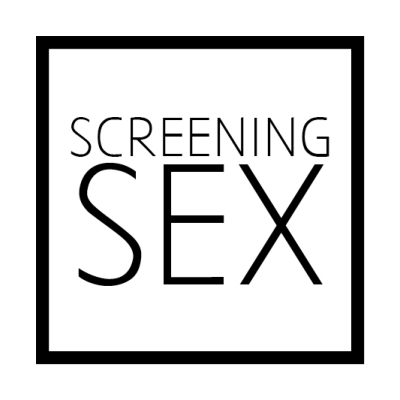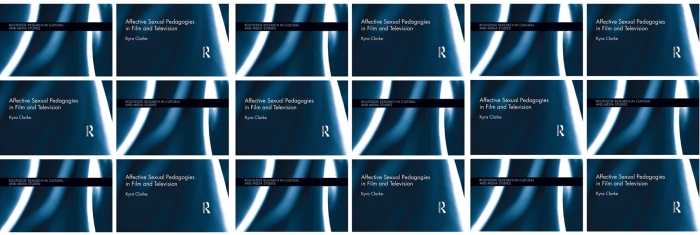Review of Real Sex Films: The New Intimacy and Risk in Cinema by John Tulloch and Belinda Middleweek. Oxford University Press. 2017. Review by Connor Winterton, Birmingham City University, UK.
Book Review – Female-Perpetrated Sex Abuse: Knowledge, Power, and the Cultural Conditions of Victimhood
Review of Female-Perpetrated Sex Abuse: Knowledge, Power, and the Cultural Conditions of Victimhood by Sherianne Kramer. Routledge. 2017. Review by Isaac Gustafsson Wood, University of Southampton, UK.
Book Review – Affective Sexual Pedagogies in Film and Television
Review of Affective Sexual Pedagogies in Film and Television by Kyra Clarke. Routledge. 2017. (HB/eBook). 248pp. Review by Madita Oeming, University of Paderborn, Germany.
Book Review – Lewd Looks: American Sexploitation Cinema in the 1960s
Review of Lewd Looks: American Sexploitation Cinema in the 1960s by Elena Gorfinkel. University of Minnesota Press. 2017. [HB/PB]. 320pp. Review by Darshana Sreedhar Mini, University of Southern California, USA.
CFP: Rethinking Gender and Agency in Pornography
Call for articles:
A special issue of AG About Gender: International Journal of Gender Studies will be dedicated to the topic of Rethinking Gender and Agency in Pornography: Producers, Consumers, Workers and Contexts, co-edited by Lynn Comella and Mariella Popolla.
Book Review – Women, Monstrosity and Horror Film: Gynaehorror
Review of Women, Monstrosity and Horror Film: Gynaehorror by Erin Harrington. Routledge. 2016. [HB/eBook]. 288pp.
Review by Sarah Arnold, Maynooth University, Ireland.
Call for Contributions – Screening Sexual Violence
The BBFC are currently in the process of consulting with the public about film classification guidelines in order to review those previously published in 2014 and issue new guidelines in early 2019. In his keynote address at the annual 'How safe are our children?' NSPCC conference last week, BBFC director David Austin shared some initial results of the current consultation and suggested that the revised guidelines would likely become stricter in order to reflect the increased increased public concern about scenes of rape and sexual violence. We are seeking short (1000-2000 word) articles, interviews, discussions, video essays or other content that address the politics of sexual violence as it relates to the screen and screen cultures in the current climate.
Are there Disciplinary Differences in Writing about Pornography?
By Alan McKee, University of Technology Sydney and Roger Ingham, University of Southampton, UK. In 2016, Professors Alan McKee (a humanities researcher) and Roger Ingham (a psychology researcher) submitted to the Australian Research Council a successful grant application for a project entitled ‘Pornography’s effects on audiences: explaining contradictory research data’ (DP170100808). We were approached by Feona Attwood, who knew of the grant and asked if we could provide a piece for this special issue that explored ‘writing about porn across disciplines’. The process of writing the grant application had already provided us with plenty of rich data about differences in disciplinary vocabularies and the ways in which various words implied different objects of study and different relationships to objects of study. Rather than trying to hide these differences we decided to make them the focus of the article. This piece presents three voices – Alan (AM), Roger (RI) and the original grant application (GA) – in trialogue, as a tentative beginning to the exploration of some potential differences between academic disciplines in conceptualising, researching and writing about pornography.
Industry Self-Censorship and the Birth of the ‘Alternative Adult’ Market
By David Church, Northern Arizona University, US. Prosecutions of theatre owners for obscenity increased after the US Supreme Court’s 1973 Miller v. California decision returned responsibility for obscenity definitions to the judgment of local community standards, meaning that ‘smaller hard-core theatres suffered through a lack of product and a suddenly more discerning hard-core audience.’ [1] One of the major implications of this legal precedent was a deliberate toning down of ostensibly aberrant or ‘taboo’ content in many post-1973 hardcore films. […] In the theatrical pornographic feature, illicit acts seldom appeared to begin with, but even a handful of 35mm genre ‘classics’- such as The Story of Joanna (1975), Femmes de Sade (1976), Barbara Broadcast (1977), Pretty Peaches (1978), Candy Stripers (1978), and 800 Fantasy Lane (1979) - suffered trims of select scenes when later appearing on video.
Book Review – Disposable Passions: Vintage Pornography and the Material Legacies of Adult Cinema
Review of Disposable Passions: Vintage Pornography and the Material Legacies of Adult Cinema by David Church. Bloomsbury. 2016. (HB, PB, eBook). 296pp.
Review by Desirae Embree, Texas A&M University, US.









